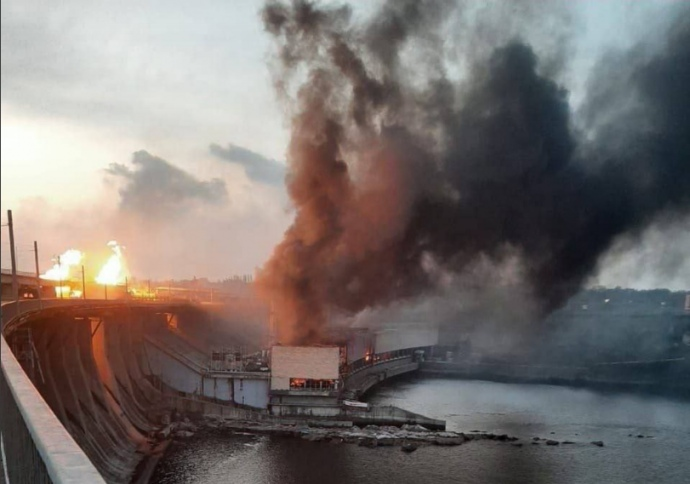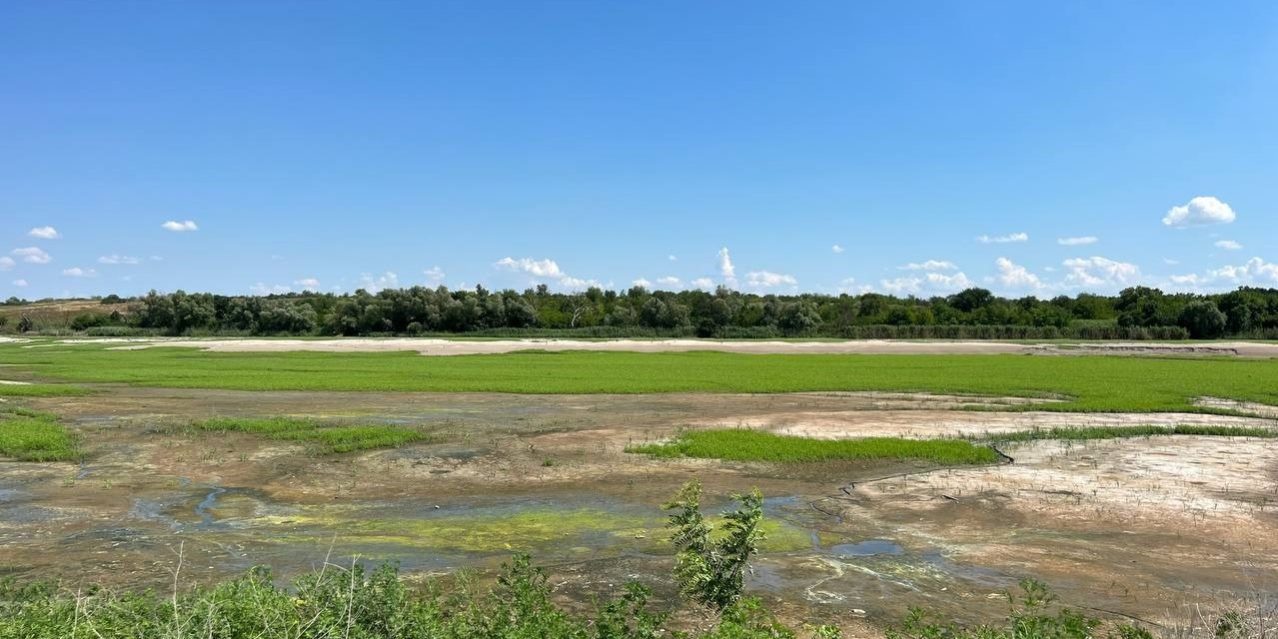Inha Pavliy
Translated by Alastair Gill
One of Ukraine’s largest sectors—the coal industry—is currently in stagnation. Russian missile attacks on energy infrastructure, the occupation and flooding of coal mines in the east of the country are collectively depriving Ukraine of an energy resource—but could also lead to yet another environmental catastrophe. Inha Pavliy examines the impact of the war on Ukraine’s coal industry and the potential consequences of failing to address the hazards of flooded mines.
*The publication of this article does not necessarily represent an endorsement of the Ukrainian coal industry by UWEC Work Group. Coal, like other fossil fuel-based sources of energy, is one of the causes of climate change and cannot be considered as a sustainable resource for the future. However, many countries continue to use coal to generate power.
For decades the coal industry was one of independent Ukraine’s strategic sectors: it was a stable resource with great potential that was used in various fields. Ukraine had sufficient reserves to ensure the country’s energy security and also provide fuel for its metallurgical and chemical industries. As Volodymyr Bondarenko, a doctor of technical sciences and an Honored Scientist and Technician of Ukraine, pointed out in a study titled “Energy: Past, Present and Future,” while globally coal makes up 67% of organic fuel reserves, in Ukraine the figure is 95.45%.
However, the share of coal in Ukraine’s fuel and energy balance has been gradually decreasing for decades. In 1998 the share was 26.6%, almost half that of 1975, when it was 47.4%. This clearly shows the gradual erosion of coal mining’s status as one of Ukraine’s key industries over the years. While 82 million tons were mined in 2011, by 2021 this figure had fallen to just 29.39 million tons (though these statistics only include mining on territory under Ukrainian control).
After the Revolution of Dignity and the subsequent war in the Donbas, control over coal mining was partially lost. From 2014 onward, Russian military aggression, the occupation of coal-mining centers in the Donetsk and Luhansk regions and the abandoning of mines in areas under Russian occupation only deepened the problems for Ukraine’s coal industry. This prompted Kyiv to begin a transition to more sustainable energy sources by launching “just transition” programs in single-industry coal towns.
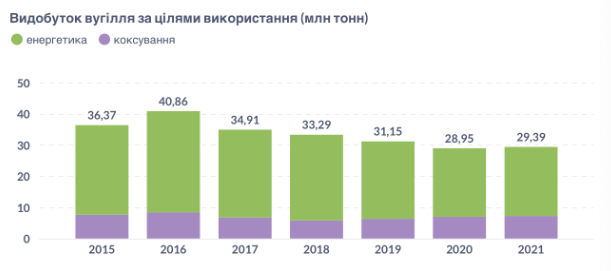
The full-scale Russian invasion in 2022 hit the coal industry very hard, though it remained one of the largest energy sectors in Ukraine. But little has been said about the environmental consequences of the ongoing war, including groundwater pollution resulting from the flooding of mines and the development of uncontrolled spontaneous coal mining.
Consequences of the full-scale invasion for the coal sector
In 2013, 37.5 million tons of coal were extracted by coal-mining enterprises in the Donetsk region, which made up almost 60% of Ukraine’s national coal output. At that time there were over 60 coal mines operating in the Donetsk region.
Tatyana Taranenko, director of the Department for Development of Base Industries in the Donetsk regional military administration, explains that after Russia began its military incursion in 2014 the majority of mines ended up in territory that was no longer controlled by the Ukrainian authorities.
“Thirty-six of these were functioning mines and 43 were mines under reconstruction (changes in structure and production with the aim of increasing efficiency). From November 28, 2014, state enterprises ceased production and financial and economic activities in the zone of the counterterrorist operation,” she says, referring to the Ukrainian army’s initial campaign to recapture territory controlled by Russian proxies. She adds that in spite of these shutdowns, the region’s enterprises still managed to mine 26.5 million tons of coal in the course of 2014.
In 2015 the share of coal production in Ukrainian-controlled parts of the Donetsk region was 51.1% of the national total, but by 2021 it had already fallen to 40.5%. As Taranenko explains, there were a number of reasons for this drop in production: the absence of a clear state program for the development of coal industry enterprises, the chronic underfunding of the industry, the fact that a military operation was underway in the region and the outbreak of the coronavirus pandemic.
After Russia began fomenting civil unrest and providing “separatists” in the Donetsk and Luhansk regions with military support in 2014, pro-Russian fighters from the self-proclaimed DNR and LNR (Donetsk People’s Republic and Luhansk People’s Republic) began to “nationalize” Ukrainian mines so that their profits could be used to support the economy of the breakaway “republics.” It is unclear exactly how many mines are currently operating in Ukraine’s occupied eastern regions. Some sources report that before 2022 around 2.8 million tons of coal was exported to Russia from the DNR and LNR annually with a value of $288 million.
According to Pavlo Kirilenko, formerly head of the Donetsk regional military administration, mines in the occupied eastern territories were almost 100% non-functional even before Russia’s full-scale invasion. But even in cases where mines sat idle, water still needed to be pumped out of the galleries in order to prevent potential local flooding, which the invaders did not do, thus establishing the conditions for an environmental disaster.
How does water get into the shafts and why does it need to be pumped out?
A mine is a complex system of vertical and horizontal underground tunnels, sometimes located at a depth of hundreds of meters. It is here that miners extract coal. Water—rainwater, groundwater, river water—always seeps into mines through cracks in the ground. For this reason, every functioning mine is fitted with powerful pumps, which work around the clock to pump out the water that has accumulated underground. Without this, the mine will simply be flooded – the water will cut off access to the coal and lead to collapses.
When water rises from the depths of the mine, it leaches the bedrock of heavy metals, radioactive elements and oil products. Water that should have remained deep underground ends up on the surface—in rivers, soils and wells. This leads to the pollution of rivers, the flooding of settlements and the poisoning of soils. Another threat is the build-up of methane, an explosive gas that forms when organic matter—which turns into coal over millions of years—decomposes under pressure. Not only can methane cause poisoning when it reaches the surface, but it can also explode underground.
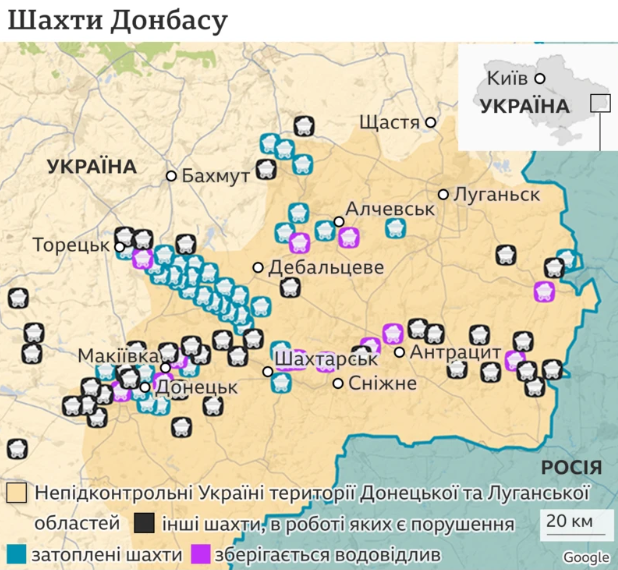
Despite the importance of pumping water out of mines, there are cases when a deliberate choice is legally made not to pump it out. In countries where it is used, this is called the “wet method” of conservation.
Wet conservation involves a range of actions and safety measures designed to ensure the preservation of inactive coal mines over an extended period of time. This conservation includes temporary and permanent protective or structural measures that prevent the destruction of a mine, including the temporary flooding of mine shafts with groundwater until the resumption of operations.
In other words, the mines are flooded, but the water is not pumped out. Wet conservation is cheaper, but is not environmentally friendly. After all, the water accumulates, rises and floods nearby settlements. It also increases the risk of methane explosions, as a rising water table inside a mine leads to a build-up in gas pressure above the water level.
The cost of war and water
Tetyana Kukushkina, acting director of the Department of Municipal Property, Land, Property Relations, Ecology and Natural Resources of the Luhansk Regional Military Administration, says that the rapid flooding and closure of mines as a result of military action can have potentially serious environmental consequences.
“Neglecting industrial and environmental safety requirements during the closure of mines can result in substantial changes in the quality of groundwater and surface water, the flooding and waterlogging of territories, the salinization and pollution of rivers, subsidence, etc.,” she explains.
“There are acute problems with waste management from mining enterprises; there is an imbalance between developed and reclaimed lands at mining enterprises, closed mines are flooded, and this means that industrial facilities, residential buildings and communications in nearby areas are at increased risk of physical destruction.”
Before the full-scale invasion, four mines owned by Lysychanskugol and four mines owned by Pervomaiskugol were operating in parts of the Luhansk region under Ukrainian government control. According to the enterprises, after the introduction of martial law in Ukraine on February 24, 2022, the mines were essentially operating in life-support mode. Military action and enemy advances led to mines being cut off from the power grid, shafts began to flood uncontrollably, and ventilation systems stopped working. All the mines in the Luhansk region are now occupied, and the likelihood is that they are all flooded.
There have been reports of the flooding of the Zolote and Toshkovska mines, as well as the partial flooding of the Karbonita mine. Since access to these sites is impossible, there is no way of assessing their current condition.
According to Tatyana Kukushkina, the lack of information about the coal mines in Russian-occupied territory, which are considered potentially dangerous, is alarming. If the pumping units of these mines cease to expel water from underground, the hydrological balance may be disrupted, threatening industrial accidents and environmental catastrophes.
“The consequences of groundwater rising to the surface could include the flooding of large areas and nearby settlements, subsidence affecting built-up areas, railways, highways and bridges, as well as the contamination of surface and underground water intakes as a result of uncontrolled leaks of contaminated water,” explains Kukushkina.

When the Luhansk region has been liberated and security measures are implemented, it will be important to carry out a study of mines. Functioning mines will need comprehensive hydrological protection, as well as the efficient use and demineralization of mine waters.
“Today there’s no up-to-date information about coal mines that are damaged or which flood uncontrollably,” says Kukushkina. “We know nothing about their hydrological state, about the volumes and speed of water inflow (most mines in the region have underground hydrological interconnections), as well as the extent of damage, areas subject to flooding, and so on.
“Since we have no access to the mines, it’s impossible to evaluate their viability and the cost of resurrecting or closing them. It will only be possible to assess the condition of the mines and work out whether it’s worth reopening them after the deoccupation of the territories of the Luhansk region and a thorough examination by the relevant specialists,” she says.
Long-term coal mining (over 150 years), large areas where the subsoil balance has been disrupted (up to 15,000 sq. km), large volumes of coal and rock extraction (9.5–10 billion cubic meters) and leaks of explosive methane (up to 6 billion cubic meters per year) have created an unstable geosystem in the Donbas. The uncontrolled closure and flooding of a large number of mines pushes a geosystem like this into an even more unstable, unbalanced state with a whole range of dangerous processes and critical changes to its environmental condition, as Doctor of Technical Sciences Yevhen Yakovlev has mentioned in his research.
As far back as 2021, Yakovlev warned that uncontrolled shutdowns of mine dewatering in conditions of armed conflict would increase the areas at risk from dangerous geological processes. In particular, the surface will begin to subside, which could lead to the collapse of residential and industrial buildings, as well as damage to critical infrastructure facilities (utility networks; railways; gas pipelines). Floods will become more widespread, and landslides will become more common.
Atomic legacy
In addition, there is one mine in the Donetsk region that may pose a far greater environmental risk than any other mine in the country. After all, it was the site of the world’s first industrial underground nuclear explosion.
In 1979, for the first time in history, an underground nuclear explosion equivalent to 300 metric tons of TNT was carried out at a depth of 903 meters in the Yunkom mine. Located in the city of Bunhe in the Donetsk region, which has been under Russian occupation since 2014, the mine lies in a densely populated and intensively exploited coal region. The goal of the test was to evaluate whether such an approach would be effective in reducing the frequency of sudden coal bursts and methane gas explosions during the development of coal seams, explains Yakovlev.
In his studies, Yakovlev talks about the presence of certain “barriers” to the spread of radiation. The rocks around the site of the explosion are dense and poorly permeable. A “lens” of molten rock has formed around the chamber, effectively sealing in the radioactive remains. The rocks themselves are capable of absorbing and “storing” radioactive substances, preventing them from being transported by water. Ninety-five percent of the radioactive substances remained at the center of the blast zone and, according to observations made in 1991, have not been detected outside the mine.

In 2018, the leadership of the self-proclaimed DNR decided to flood the Yunkom mine, in spite of the fact that it was contaminated with radioactive waste. At the same time, the separatists removed some of the pumps from the mine, which resulted in uncontrolled flooding.
As of 2020, the mine was already completely flooded, as reported by the International Human Rights Community – Special Monitoring Mission. The total concentration of radionuclides in nearby aquifers, when measured at a distance of 5 kilometers from the site, was 20-34*103 Bq/kg. This signified that low-level radioactive water had already entered the drinking water horizon, the name given to a layer of porous rock that can provide water for a well.
It is worth noting, however, that this information was obtained through unofficial channels from the occupied territories and from tests carried out by anonymous independent experts. However, given the very real nature of the flooding, it is quite reasonable to assume that radioactive water may have penetrated the drinking water supply.
Sitting on a time bomb?
The environmental and geological danger caused by military action in the Donbas is only aggravated by the dense population of its cities and villages, especially in Russian-occupied areas. And now, given the devastation wreaked on cities and villages under Ukrainian control by Russian shelling, there is a serious risk that the Donetsk and Luhansk regions will be largely abandoned. After all, the complete destruction of many settlements, coupled with the environmental threats caused by the war and the toxic consequences of malpractice in the coal industry, will lead to an exodus of the population.
The situation has now reached a stalemate, with the mines of the Donetsk and Luhansk regions being continuously flooded. No one monitors contaminated mine water levels, either in government- controlled territory or in Russian-occupied areas. As a result, they will leach into drinking water sources, such as the Siverskyi Donets, Luhan and Kalmius rivers, and may even lead to the gradual pollution of the Sea of Azov. This is a slow process and could take centuries. But if no action is taken, the entire region is at risk of pollution.
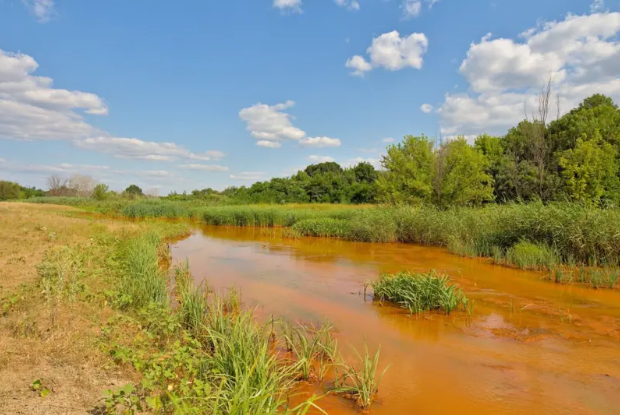
In the meantime, uncontrolled flooding will cause landslides, flooding of settlements and methane explosions. The likelihood is that such events will become increasingly common both in territories under Ukrainian control and Russian-occupied areas of the Donbas.
Main image source: opendemocracy.net




